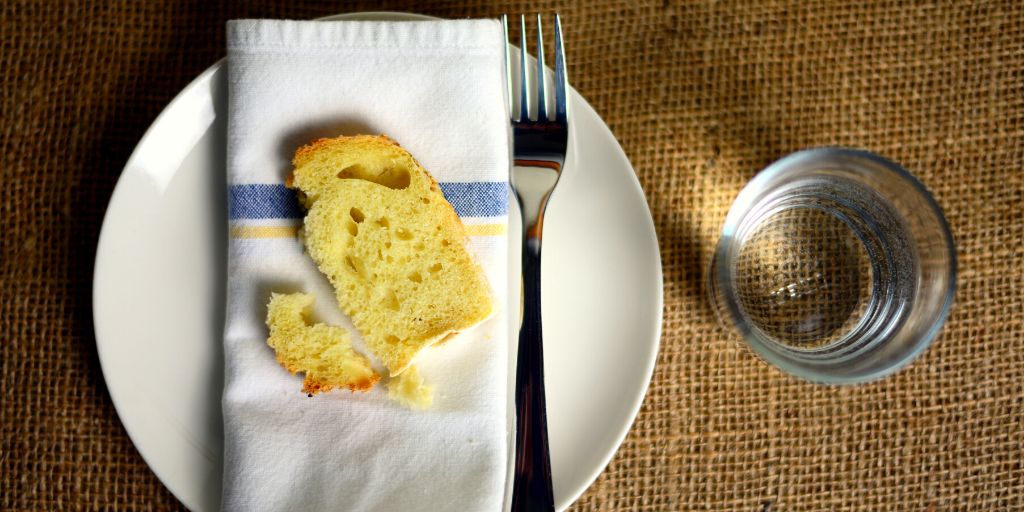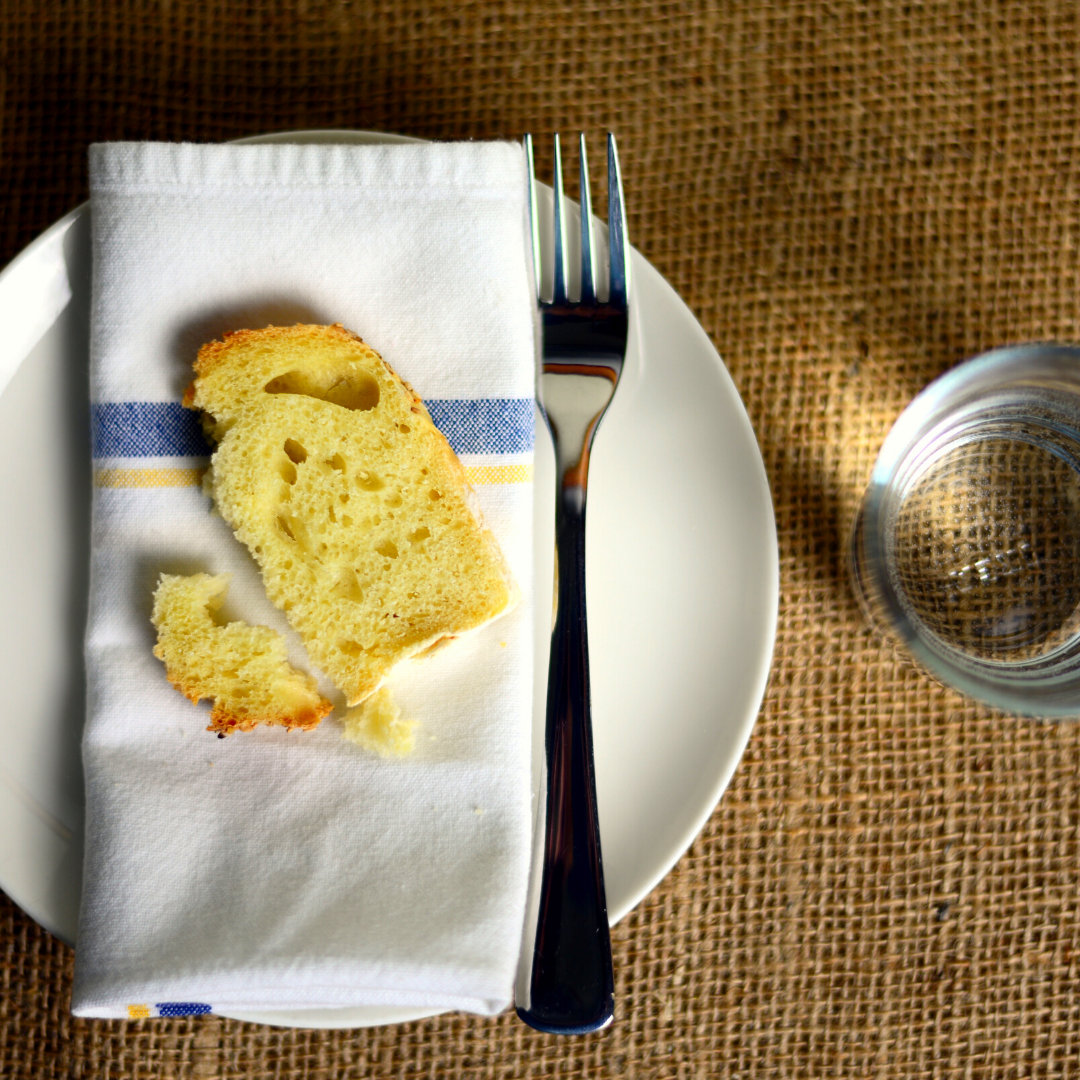
Alexandra Davis reflects on the value of fasting as a physical practice that creates a spiritual reality.
When it comes to food, I think people can be divided into two camps: those who wake up in the morning thinking about what they’re going to eat that day, and those who don’t. I’m squarely in the former camp, and as such, I’ve always been all too happy to interpret the “fasting” prong of the Lenten trilogy of sacrifices—prayer, fasting, and almsgiving—as loosely as I can.
But this year is different. It’s my first Lent in three years that I’m neither pregnant nor nursing and I feel pulled to use this newfound bodily autonomy to cultivate a spiritual practice: I’m ready to try fasting. But this time, I want to take it further than simply pulling the pepperoni off my Friday pizza. I mean fasting in its traditional understanding: putting my body in a physical state that mirrors the penitential posture that Lent requires.
Proving We Can Do Without
I’ve found fasting uniquely challenging. I’m not the biggest fan of being hungry, and I can easily fall into a trap of viewing certain corporeal pleasures – like food – as a crutch on hard days (I know I’m not alone – after all, why else would so many brands create products etched with phrases like “mama needs wine?” or “but first, coffee?”).
Nonetheless, I took a small step forward and fasted on Ash Wednesday. It felt good to go to bed feeling a bit empty. My physical hunger encouraged me that I was, in fact, capable of making it through an entire day on less food than I’d prefer. But more importantly, my head seemed clearer and my heart felt a little bit hungry to pray. I felt like I’d given my soul space to breathe.
This made me wonder: Can our physical hunger for food be spiritually transformed into a hunger for something else, something intangible? A hunger, perhaps, for Christ Himself, made tangible in the Most Holy Sacrament?
Granted, I’m a fasting novice: But I believe the answer is a resounding yes.

When a Physical Reality Becomes a Spiritual One
Our lived experience on earth is embodied. Every emotional, spiritual, intellectual, or relational experience is linked to a physical reality. The process of becoming a mother is bound to the biological reality of pregnancy (or, for adoptive mothers, the emotionally taxing adoption process). We are brought into the Church through the concreteness of the sacraments. We experience absolution for our sins through the encounter of confession and the laying on of hands. We meet the real, human Christ by literally consuming him. And when we fast, we create physical space for a spiritual reality to bloom inside of us: to rely less on the physical world and more on Christ. To make ourselves into empty vessels so that the triune God can fill us to the brim.
For the first time, I am starting to understand fasting as more than an arbitrary spiritual practice or an item to tick off my to-do list. It is a way to create a spiritual reality—hunger for the Lord’s presence in my life—by first subjecting myself to a state of physical need.
The saints have affirmed throughout the centuries that small mortifications can lead to spiritual growth. Both St. Augustine and St. John Chrysostom described the practice of fasting as giving “wings” to our prayer. And as captured in her diary, St. Faustina recounts the urgings of Christ to see fasting as one of many habits to not only cultivate spiritual growth but also to dispel the powers of evil over our souls—as recorded, “the power of sacrificial love evicts the enemy.”
If we can create space for Grace to fill us and Christ to transform us, why would we wait to feel “inspired” or overtaken with devotion before committing to a life of virtue? Why not take on actual, tangible, physical practices that can help us grow in holiness—even (and maybe especially when) we don’t feel like it?
This Lent, I am learning to be hungry. And just as the physical and corporeal warmth of food nourishes our hungry bodies, so too does the power of Grace and mercy fortify us when we let ourselves experience an all-consuming hunger for it.
Copyright 2022 Alexandra Davis
Image: Canva Pro
About the Author

Alexandra Davis
Alexandra Davis writes on issues at the intersection of faith, culture, and family life. Her writing has been featured in online and print media including Verily Magazine and FemCatholic, and she is a former Co-Editor of the Carolina Review. She is an attorney and the founder of Davis Legal Media, a ghostwriting service for lawyers and law firms. Alexandra lives in Raleigh, North Carolina with her husband and two sons.


.png?width=1806&height=731&name=CatholicMom_hcfm_logo1_pos_871c_2728c%20(002).png)
Comments